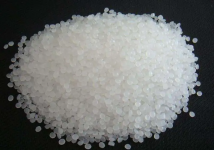read: 550 time:2025-06-10 12:56:43 from:化易天下
Glacial acetic acid is a term that often intrigues people, particularly those with an interest in chemistry or industrial applications. Understanding the reasons behind this naming is essential for grasping its unique properties and the specific conditions under which it is used. This article will explore why glacial acetic acid is called so, delving into its physical properties, production process, and industrial significance.
The term "glacial" in glacial acetic acid refers to its appearance and behavior under certain conditions. Acetic acid, the main component of vinegar, is typically found in a diluted form. However, when purified to a concentration of more than 99.5%, it becomes an anhydrous, or water-free, compound. At temperatures below 16.7°C (62°F), this highly concentrated form of acetic acid solidifies, forming ice-like crystals. The name "glacial" is derived from this characteristic, as the solid form resembles a glacier or ice. Thus, the term "glacial acetic acid" aptly describes the substance when it is in this nearly pure, crystalline state.
The reason glacial acetic acid is called so also ties into its chemical purity. Unlike the diluted acetic acid used in food preparation or other less stringent applications, glacial acetic acid is almost entirely free of water. This high level of purity is crucial for its use in various industrial processes, such as the production of plastics, solvents, and other chemicals. The absence of water not only affects its physical properties but also enhances its reactivity and efficiency in chemical reactions. Therefore, the term "glacial" not only describes its physical appearance but also signifies its high purity and readiness for industrial use.
Understanding why glacial acetic acid is called so also requires an appreciation of its role in industry. The unique properties of glacial acetic acid, including its high concentration and low freezing point, make it invaluable in manufacturing processes. It serves as a key precursor in the production of various chemical compounds, such as acetic anhydride, acetate esters, and even pharmaceuticals. The term "glacial" thus emphasizes the specialized nature of this compound, distinguishing it from less concentrated forms of acetic acid and highlighting its suitability for high-stakes industrial applications.
In summary, glacial acetic acid is called so due to its distinct physical property of forming ice-like crystals at lower temperatures and its nearly pure composition. The term "glacial" effectively captures both its appearance and its significant role in industrial processes. Understanding why glacial acetic acid is called so provides valuable insights into its applications and the reasons behind its widespread use in the chemical industry.

Jincheng Petrochemical's 300000 ton polypropylene plant successfully trial production, 2024 polypropylene market analysis

The ABS market remains sluggish, what is the future direction?

Market differentiation of bisphenol A intensifies: prices rise in East China, while prices generally decline in other regions

The production method and process flow of silicone acrylic lotion, and what are the common raw materials